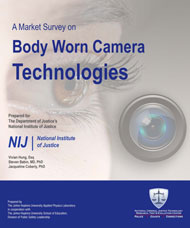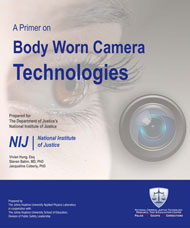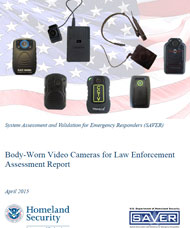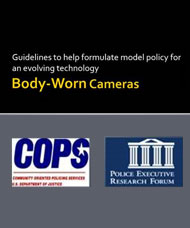MENU
JUMP TO
Wearable camera systems can be a valuable tool for law enforcement agencies. Specifically, the National Institute of Justice's Body-Worn-Camera Market Survey states that body-worn cameras (BWC) "offer potential advantages in keeping officers safe, enabling situational awareness, improving community relations and accountability and providing evidence for trial."
BWC systems typically include a camera, microphone, and battery pack that can be mounted on an officers' person. Additional components to consider include docking and charging abilities, video storage, evidentiary controls, and privacy redaction functions. When designing a technology solution or selecting a BWC provider, it is important to understand and evaluate how each solution compares to, and fulfills, the operational and specification needs of the agency in question and relevant jurisdictional laws. Take some time to review these technology-focused frequently asked questions, resources, and example requests for proposals when implementing a BWC program.
BWC Podcast Series
For more about these topics, please check out the BWC Podcast Series.
Subject Matter Experts Share
See the YouTube Terms of Service and Google Privacy Policy
Featured Resources
SAVER Overview
DHS's System Assessment and Validation for Emergency Responders (SAVER) program provides a comprehensive review of body-worn cameras and their possible impacts to civil liberties and rights
COPS Policy Guidelines
Guidelines to help formulate model policy for an evolving technology around Body-Worn Cameras






